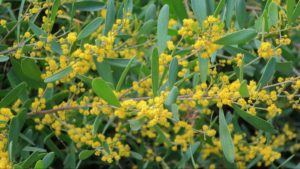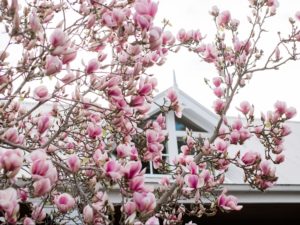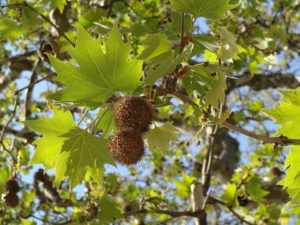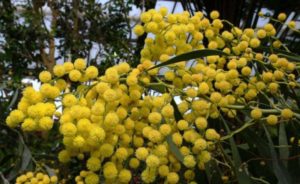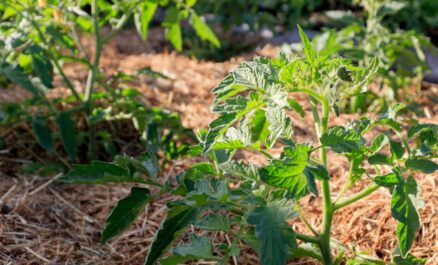The Very Best Australian Trees
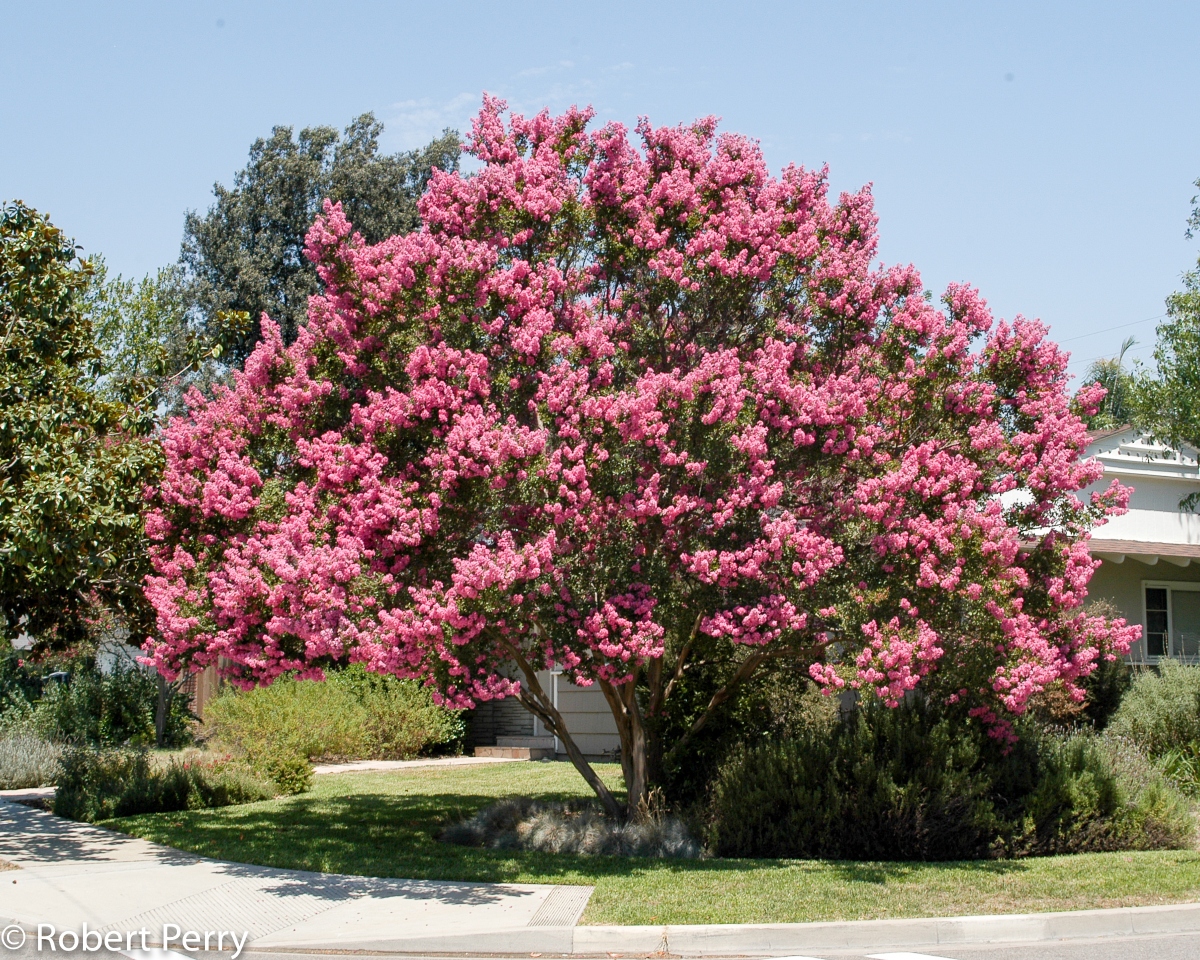
Trees have a place in every garden — from inner city courtyards and suburban backyards to sprawling country estates that stretch as far as the eye can see. As well as adding beauty to landscapes, trees can provide shade, block out unwanted views, attract bees, provide homes for native birds, and improve the environment.
In this article, we’ll be exploring a mixture of the best Australian trees that you can plant in your garden, as well as some popular foreign trees that are commonly available across the country.
Acacia
Image from The Spruce
Most of the 1200 species in the Fabaceae family are found in the southern tropics and subtropics, notably Australia and Africa. Most acacias are small to medium-sized trees or shrubs. The foliage, which is often silver-grey or blue-green, is fern-like when young and in many species remains that way. However, sometimes the leaves narrow as the plants mature.
Flowers are cream, yellow or white and form an abundant display of densely-clustered blossoms clustered around short spikes or rounded heads from late winter into spring. Acacias yield a resinous gum with many uses — from culinary to medical — and the seeds and seed pods of several species are edible.
Acacias are ideal as a hedge or feature tree, are fast growers and prefer full-sun conditions in light free-draining soil. They grow better with reliable watering in summer but are generally drought-tolerant once established. Once they’ve flowered, they can be given a light pruning and are propagated mostly from seed.
Banksia
Banksia is a member of the protea (Proteaceae) family and is a genus of over 100 species of evergreen trees and shrubs named after English botanist Sir Joseph Banks. They are sturdy plants with a stout trunk and can grow up to ten metres tall. Most banksias have long leathery and coarsely-toothed leaves, although some species have more delicate needle-like foliage.
Spherical or cylindrical spikes are densely packed with hundreds of small flowers, typically a shade of yellow. However, orange, pink, red, and even violet flowers can also occur, and flowering time depends on the species. These thread-like blooms are long-lasting and nectar-rich so attract a variety of birdlife, and as they die, they develop into large woody fruiting cones.
Ideal as a hedge, feature plant or grown in a pot, banksias prefer well-drained sandy soil and an open sunny position. Most will withstand dry conditions and are moderately frost-tolerant once established. Cutting flowers will thicken up foliage and encourage flower production. Banksia can be propagated from seed, and some species will even grow from cuttings.
Bottle Brush
An Australian tree belonging to the myrtle (Myrtaceae) family, the bottle brush has over 30 species, with its common name referring to the shape of its flowers. Highly ornamental, they are valued for their abundant and brightly coloured spikes of thread-like flowers that are typically red, pink, cream, or green. Most bottlebrushes offer a colourful display over long periods (attracting lots of birds!), and round, long-lasting woody seed capsules follow flowers.
They can grow up to three metres high, and most trees develop into a mass of fine, often arching branches around one or more trunks. Leaves are lance-shaped or linear and arranged spirally around the stem, and new growth is richly coloured in bronze or pink tones.
Most prefer a sunny position in moist, well-drained, and slightly acidic soil. They are only marginally frost-tolerant (most won’t tolerate prolonged frosty winters), and late frosts can devastate the tree’s new growth. Regular trimming will keep them tidy, encourage bushier growth and greater flower production, and most can be propagated from seeds or cuttings.
Crepe Myrtle
Image from Inland Valley Garden Planner
The Lagerstroemia species is an adaptable tree that is available in various sizes, from shrubs and miniatures to small trees and larger varieties that grow up to six metres tall. These trees are hardy and deciduous with colourful autumn foliage, and a spectacular trunk with beautiful ornate bark.
They have beautiful autumn foliage and spring growth and will also inject some wonderful red, pink, white, or deep mauve colour into your garden in summer. Flower petals are wrinkly and crinkly — like crepe paper — hence their name!
All crepe myrtles grow well in Australia, although they particularly like hot, dry climates and can be remarkably drought-tolerant. They are available as a bare-rooted plant in winter, or will transplant well from a pot. To establish, give them plenty of water so the root system develops well.
To prune, wait until the flowers are finished and then cut back at least thirty centimetres to enable branches to shoot out new growth. Or you can let the plant grow to its unique, natural shape. They propagate best when taken from hardwood cuttings in winter.
Cypress
Image from Perennial Wholesale Nursery
Originating from East Asia and North America, these fast-growing coniferous evergreen trees are from the cypress (Cupressaceae) family. A popular species grown in Australia is the Bhutan or Himalayan cypress (Cupressus torulosa), which is ideal for maintaining privacy in a garden or landscape. This tree is large and dense and will provide screening to a height of up to seven metres after around six years.
Its shape is bulbous and broad at the base and becomes thinner and pointed towards the tip. In colder climates, it develops a distinctive shape often called a “witch’s hat”. Leaves are small and arranged in pairs and tightly pressed to the branchlet’s stems in fan-shaped sprays. Seed cones are small and rounded and release narrow, winged seeds as soon as they ripen.
The cypress is ideal as a dense hedge or feature tree in mild to cold climate gardens, or as a screen or windbreak on a larger property. It is low maintenance, requires little pruning, and prefers full sun and fertile, well-drained soil. Propagate them by grafting or from half-hardened cuttings taken in summer.
Dogwood
Cornus florida — By Frank Vincentz – Own work, CC BY-SA 3.0
Originating in Europe and North America, the dogwood is from the Cornaceae family. They are hardy, adaptable and mainly deciduous trees and many species are grown for their ornamental value. Some offer beautifully coloured autumn foliage, develop colourful stems in winter or develop decorative pink or flushed red colour in summer and spring.
A popular species grown in Australia is the Flowering Dogwood (Cornus florida), which typically grows to around ten metres tall, although a ten-year-old tree will be around half that height. It is low-branching and pyramidal in shape with oval, dark green leaves that turn into lovely red shades in autumn.
It blooms in early spring, however, the flowers are tiny, yellowish-green and insignificant as they are compacted into button-like clusters. However, each cluster is surrounded by four white, petal-like bracts which give the appearance of a large white flower when opened. Its bright red fruits mature in late summer to early autumn and are loved by birds.
Most dogwoods prefer a climate with distinct seasons and need winter cold to flower well. They should be planted in part-shade or full sun with fertile, well-drained soil and need to be watered frequently during the warmer months.
They can be propagated from grafting, taken from half-hardened cuttings in summer, or raised from stratified seed (which is the process of treating seeds to simulate the natural conditions they must experience before they can germinate).
Eucalyptus
One of the most popular Australian native trees, the eucalyptus belongs to the myrtle (Myrtaceae) family, and there are over 800 species of this evergreen. The botanical name is derived from the Greek word “eu-kalypto” which means “to cover”, and refers to the flower bud’s cap. Eucalyptus are graceful and open in habit, and range in size from multi-stemmed shrubs (called mallees) to immense single-trunk trees. They are known for their peeling, multi-coloured bark and aromatic leaves that are dotted with oil glands.
Circular leaves appear on many young species, but mature trees typically have sickle-shaped leaves. This tree flowers year-round, which consist of hundreds of stamens that emerge from a central cone-like bud. They come in a range of colours from white, deep pink, and bright red, to vibrant orange and lime green, attracting large colourful birds and a range of native bees species.
Most eucalypts are fast-growing with a long life, are best suited to semi-arid or warm-temperate regions, and are drought tolerant once established. Most won’t tolerate prolonged winters or repeated severe frosts. These trees love light well-drained soil in a bright sunny position, and can be propagated from seed.
Frangipani
By Renesis – Own work, CC BY-SA 3.0
Native to Mexico, Venezuela and Central Mexico, Plumeria will bring a tropical feel to Australian gardens, but generally only in warm and temperate climates as they can be frost-tender. This tree can grow to a height of eight metres and is predominantly deciduous with lush leaves. It develops a broad, spreading crown, as it matures with the branches often starting just above ground level.
Perhaps its most striking character is its beautifully sweet fragrant flowers that bloom from the warmer months from November to April. Flower colours also vary enormously — from white varieties with a yellow centre to vibrant pinks, yellows, apricots, pink-orange-yellow (often called “fruit salad”), and even dark shades of mahogany-red. Birds, insects and butterflies are drawn to frangipanis because of their sweet scent, however only native trees will provide the nectar they love.
Frangipanis prefer sandy to free-draining soil and should be placed in full sun and protected from winds. Ideally planted during late winter before new spring foliage emerges, propagated frangipanis should be prepared in winter when sap movement is minimal. Cuttings should be left in the sun for a few weeks to dry out and then placed in potting mix. Within a few weeks, they will have formed roots!
Holly
By Jürgen Howaldt – Self-photographed, CC BY-SA 2.0 de
A member of the Aquifoliaceae family, holly contains more than 400 species of evergreen and deciduous shrubs and trees. English holly (Ilex aquifolium) is the most well-known, grows naturally in a pyramid shape, and can grow to fifteen metres tall.
It is synonymous with Christmas with its dark green, prickly leaves and red berries that are used in floral decorations. However, in Australia, these develop in autumn — perfect for a Christmas in July party! The berries mature from perfumed greenish-white flowers that appear from late spring to early summer. They range in colour from white, orange and yellow to red, red-brown and black. These are eaten by birds, who then disperse the seeds into the landscape.
Cultivars of English holly can have red, purple or light green branchlets and variegated silver, gold or cream leaves, and they make great feature plants, privacy screens or hedges. Holly prefers cooler climates, but before you plant it check council regulations in your area, as it is considered an environmental weed in NSW, the ACT, Victoria, South Australia and Tasmania.
Holly should be planted in deep, well-drained soil and watered well in summer. Propagation is usually from half-hardened cuttings, as the seed must be stratified. They will also take a long time to germinate, and the sex of the seedling will remain unknown until it flowers. A male and a female plant is required to grow berries, as a male is required to pollinate the female tree.
Juniper
Image from AromaWeb
Widespread in the Northern Hemisphere, this genus belongs to the cypress (Cupressaceae) family and contains around 60 species of coniferous evergreen trees and shrubs. Junipers typically grow to four to ten metres in height, but five metres is often the maximum height, even in native habitats.
With a stately habit and impressive foliage, as well as dense leaves that offer both colour and texture, junipers are of high ornamental value in any garden. When crushed, the foliage of most species is pungently aromatic. They produce fleshy berry-like cones, which ripen to a reddish or blue-black colour, and Juniperus Communis berries are edible and used in gin distillation. In fact, the word gin comes from the French word “genévrier” and the Dutch word “jenever” – both which mean “juniper”. Most plants drop their seeds annually, however, Juniper berries ripen over two to three years, and in gin, its distinctive taste depends on where the berries are sourced.
This tree’s hardiness varies, but all will tolerate repeated frosts and the toughest can survive cool summers and sub-arctic winters. Most junipers are also drought-tolerant but will respond well to regular summer watering. Junipers should be planted in a sunny, open and airy position with well-drained soil. They can be trimmed to shape if required, but avoid cutting bare wood as it rarely sprouts. Propagate from seeds, grafting, or from hardwood cuttings.
Magnolias
Image from The Spruce
Magnolias are an ancient group of deciduous plants native to the northern hemisphere from the family Magnoliaceae, and are named after French botanist Pierre Magnol. They are slow-growing, one of the hardiest flowering plant, and have thick leaves and attractive foliage throughout the year. They also produce delicate, spectacular winter and early spring blossoms with a heady fragrance. Colours range from white and port wine through to burgundy shades.
This tree evolved long before bees, so are pollinated by beetles, which are attracted by their fruity fragrance. They also attract songbirds and provide shelter and seed for migrating fliers. They will take around three years until they are mature enough to flower, and after ten years, can grow to around five metres tall and will have developed a rounded crown of growth.
Magnolias prefer mild or cool climates, however, won’t tolerate exposure to temperatures below zero. They should be well-watered and planted in a cool, sheltered spot away from hot winds and afternoon sun in subtropical zones. Once established, they are more resilient but still require deep, regular deep watering throughout summer and spring, particularly in hot climates. They can be propagated from cuttings in the summer, or by air layering which involves “wounding” a living branch and then surrounding it with a moist growing medium until roots form.
Oak
Image from Bios Urn
While the English oak (Quercus robur) is perhaps the best known of all the oaks, it is just one of around 600 species that make up this genus that belongs to the beech (Fagaceae) family. The genus consists of mostly evergreen or deciduous trees, but there are also a few shrubs.
Many species are large, long-living and impressive trees with a domed canopy and a broadly branching habit. While many have lobed leaves (with distinct projections and individual inside veins), others have simpler, toothed foliage (with a leaf margin that looks like a saw or serrated knife). In spring, sprays of pale yellow or tiny green flowers open, followed by the cupped fruits (called acorns), which are synonymous with this tree. Because of their size, oaks are most suited to street planting and larger properties.
Hardiness varies with the oak, but they prefer full sun and deep soil that remains moist. Some pruning may be needed with younger trees to establish a single trunk, and propagation is most often from seed, although cultivars can be grafted.
Plane Tree
By Jebulon – Own work, CC BY-SA 3.0
This genus in the plane (Platanaceae) family consists of eight species of deciduous trees found across the northern temperate zones, including North America, Eurasia, and Mexico. The genus name comes from the Greek word “platus,” meaning broad, which refers to the broad leaves and spreading crown. These are tall, sturdy, easy-to-grow trees that can reach twenty metres in height, so are suitable for larger properties and street, avenue or driveway planting.
Plane trees are an attractive ornamental tree with a straight trunk, a dense, high-branching canopy and branches that droop slightly which creates a graceful effect. It has large, bright green, maple-like leaves that turn gold and copper in autumn. Their most distinctive feature is their bark, which flakes in small patches to create a camouflage pattern that reveals the ivory, buff and pale green inner bark. The flowers are insignificant and develop into spherical balls of tiny dry fruits that eventually break into a fluffy mass of tan spiky balls that hang in groups from stalks.
These trees will tolerate a wide range of conditions in all but the coldest areas and young trees grow quite quickly. While they can adapt to poor, dry, intermittently wet and compacted soils, they prefer deep, moisture-retentive soil in a sunny open position. They require little pruning apart from when young to establish a single trunk and propagation is from cuttings, seed or layers.
Poinciana
Image from Redland City Bulletin
The Poinciana (Delonix regia) is native to Madagascar, and in Brisbane, its vibrant flowers herald the coming of summer and the start of storm season. It is a slower-growing tree, and although the average height is three to five metres, their spreading growth habit can mean they can grow up to ten metres.
It is noted as an ornamental favourite for its fern-like leaves and large, spanning branches that provide ample shade as an umbrella canopy, and large, vibrant coloured red-to-orange flowers that flower throughout summer.
As a semi-deciduous tree (that shed old leaves in spring with new ones following immediately), it is never without bright green foliage. Therefore, it is best planted in the back corner of a garden (ie. away from swimming pools!) as flowers, leaves and seed pods will drop.
The Poinciana requires work to maintain its structure and a healthy look all year round, so should be pruned regularly to strengthen branches before spring growth begins. This is because its branches tend to overextend with the new growth and droop.
Spruce
Image from Pinterest
A member of the pine (Pinaceae) family, this genus contains about 45 species of evergreen coniferous trees found in the temperate to subarctic regions of the Northern Hemisphere. Mainly conical in shape, they can reach great heights, however, there are smaller-growing cultivars that are ideal for garden settings. The leaves are slender, prickly needles that have a strong blue tint, and in some species they are grey, green, silver or metallic silver-blue. This tree also produces cones that are attractive and pendulous at maturity.
In these trees hardiness varies, but most tolerate severe frosts and prefer cool summers. Spruces are generally slow-growing trees, but they can withstand winds, so make excellent windbreaks. Plant them in a sunny position with deep, cool, and moist soil, and pruning is unnecessary, as these trees do best if left to develop their natural form. They can be propagated from seed, cuttings or grafting.
Wattle
Image from South Western Times
Most commonly known as the Golden Wattle, Acacia pycnantha is one of the more popular Australian trees, belonging to the family Fabaceae, with an estimated 850 species. Although it can grow to a height of eight metres, breeders in recent years have released more compact forms that are ideal as shrubs, ground covers, screening plants, or grown in large pots. However, check with your local council first, as despite being an “Australian native,” some are considered a weed.
Wattle has flattened, sickle-shaped leaf stalks rather than true leaves. They are hardy, easy to grow, quick to mature and produce flowers from a young age. Flowers are fragrant and golden and masses appear in late winter and spring, followed by seed pods, and the seeds have a variety of culinary uses. Several species of thornbill and honeyeater cross-pollinate these trees as they brush against the flowers, transferring pollen between them.
They have a good tolerance for extremes of cold and heat and prefer sunny to semi-shaded locations. Wattles are hardy, water-wise plants, but soil should be free-draining. Prune when they are young and after flowering to prolong their life and keep them compact and bushy. Propagation is typically achieved through seeds.
References
- 2018, 10 trees to plant in backyards big or small, Homes to Love
- 2020, Trees and shrubs, Gardening Australia
- 2014, The best 5 trees for Brisbane gardens, Seed Landscape Designs
- 2020, Fast-growing Australian native trees, Flower Power
- 2008, Crepe Myrtles, ABC Gardening Australia
- 2006, Frangipani, ABC Gardening Australia
- 2020, Best Lilly Pilly varieties, Burke’s Backyard
- 2015, Magnificient Magnolias, ABC Gardening Australia
- 2006, Poincianas, ABC Gardening Australia
- 2007, Plant finder, ABC Gardening Australia
- 2020, How to grow and care for frangipani, Bunnings
- 2020, Magnolias, Burke’s Backyard
- 2020, Privacy Cypress, Burke’s Backyard
- 2020, Flowering Dogwood (Cornus florida), Ian Barker
- Jenny Dillon, 2020, How to grow and care for wattle, Better Homes and Gardens

